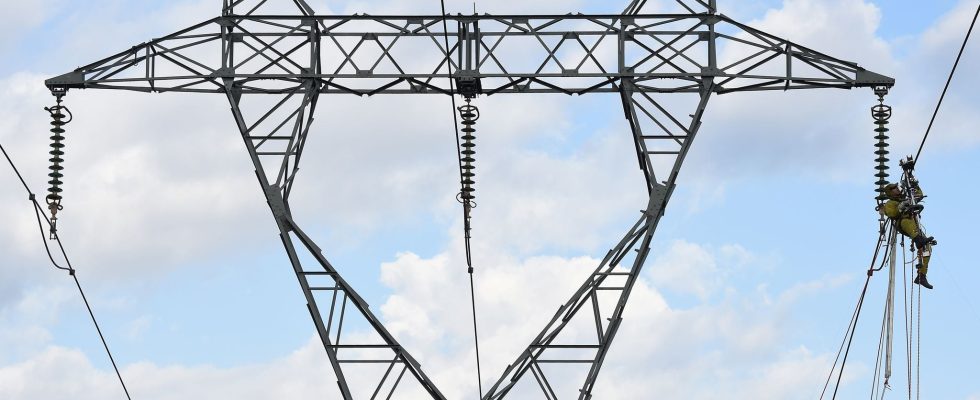The effort is colossal. If Europe wants to succeed in its ecological and energy transition, it will have to put on the table… 1,500 billion euros per year, according to the new roadmap unveiled on Tuesday February 6 in Brussels. In this avalanche of liquidity, a significant part concerns the modernization of the electricity network as well as the development of new infrastructure. Wind turbines, very high voltage lines, nuclear reactors… Faced with climate challenges, Europe and France are strengthening their network. To the point of seeing their landscape cluttered with unwanted objects? “The course set in terms of energy policy will inevitably have an imprint on the territory,” warns Chloé Latour, director in charge of strategy and regulation at RTE, the electricity network manager.
In the company’s Parisian premises, a number of experts are already working on the future master plan of the national network. The document, not finalized, should appear in June. The objective? Push the analysis of energy needs further, provide deployment prospects for public stakeholders while leaving them some room for maneuver on the different possible routes.
“We place priority emphasis on the optimization of existing installations as well as the sharing of infrastructures, confides Chloé Latour. For example, for certain large industrial sites such as Dunkirk or Fos-sur-Mer, we have estimated the overall needs in the area and we will propose a common infrastructure. We are also taking into account new technological options such as battery storage. In any case, we are only developing essential infrastructure. However, in our future network plan, there will be a new piece of equipment”.
And for good reason: “The fight against climate change cannot be conceived without massive electrification. And this requires both a strengthening of very high voltage lines, the establishment of new interconnections with neighboring countries as well as “a significant densification of the distribution network, closely complementary to that of transport”, lists Christophe Bouneau, professor of economic history at Bordeaux Montaigne University, and coordinator of the Chair Electric Networks and Societies in Transition.
“10 to 20% new power lines”
France is experiencing a turning point, similar to the Messmer plan launched in 1974. “As at the time, there will be a before and an after. The conjunction of the nuclear program and the massive development of renewable energies will have to be accompanied by an immense effort to equip the energy transport and distribution network, and therefore to develop the territories”, specifies the historian. What will be the impact on the landscape? “In the next fifteen years, we will undoubtedly have 10 to 20% new power lines,” foresees Christophe Bouneau. A significant extension, but which should not disfigure France. “Several elements limit the risks of proliferation,” recalls the specialist. Firstly, onshore wind power should not experience strong development because wind energy will mainly be captured at sea. France will therefore need fewer connection lines on land. At the same time, the rise of solar power owes a lot to individual installations on the roofs of houses, and less to the multiplication of vast fields of photovoltaic panels. Finally, many power lines – those with the lowest voltage – can be buried. “We do it a lot for those of 63,000 or 90,000 volts,” confirms Chloé Latour.
The subject of the acceptability of the installations by the population remains no less serious. From 220,000 volts, burying the lines becomes extremely expensive and poses technical challenges. They must therefore be deployed in the open air. “Even if visual and noise pollution only concerns a very small part of the population, there will be people impacted, for whom compensation will have to be devised,” predicts Christophe Bouneau. Furthermore, perceptions have changed. In the 1960s, the engineer working at EDF enjoyed a positive aura: he brought light to the population. François Mitterrand even made it a campaign element when, in 1965, he appeared in front of an electricity pylon with the slogan “A young president for a modern France”. Other times, other manners. Today, the French want their butter and their money. Electricity without its nuisances, whether real – their impact on the landscape – or supposed: no independent study has concluded that electromagnetic waves from very high voltage lines have an impact on health.
It is with all this in mind that RTE is preparing its future network plan. “It will be submitted to the national commission for public debate and the environmental authority, as well as to the Ministry of Ecological Transition in addition to the energy regulation commission. It is therefore not intended to be debated only between us. This is why we will very soon launch a public consultation on the subject”, specifies Chloé Latour. Will the French be convinced? A recent example shows the usefulness of having a sufficiently meshed network: “Without interconnections with Europe, we would have had difficulty getting through the winter of 2022 due to the difficulties encountered by EDF on its reactors”, recalls Christophe Bouneau . Some people forget it a little quickly. The European Union also has its protective virtues.
.
